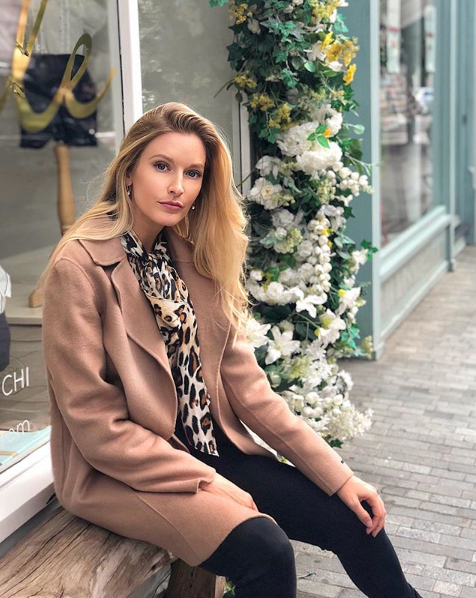
I remember very distinctly the day that I was tested for the BRCA 1 and 2 mutations. I sat patiently in my OBGYN’s office, staring at the posters about birth control… pregnancy… STDs, but none of them referencing the decision that I was about to make. I was choosing to be tested for a gene mutation that could increase my lifetime likelihood of breast cancer to 72% and ovarian cancer to 39%. But to be honest, I was pretty calm about the entire process. Why? Because I was all but certain that my results would come back positive.
By the time I was 16, I had lost by mother, grandmother and great aunt to breast cancer. This sad legacy was something that I was acutely aware of for most of my life. By the time I was born, my mother was already a 7 year breast cancer survivor. At age 27, she was diagnosed with a Stage 3 invasive ductal carcinoma in her right breast. She underwent a unilateral mastectomy all the way down to the chest wall. Despite several attempts, she was unable to reconstruct and lived my entire childhood with one breast. One of my earliest memories was looking up at her as she dressed, a ritual that always included the placement of a breast form. Twenty years ago, women didn’t have the same options that they do today. My mother’s prosthesis was a cumbersome, beige, silicone “breast” (a generous description) that required her to wear a “heavy duty” support bra at all times. If she wanted to wear a normal bra, she had an oval-shaped cotton pad that (roughly) mimicked the shape of a real breast. But she made do. At the end of the day, the most important thing was that she was alive… she was a survivor.
Just one month shy of my 14th birthday, while snooping through my mother’s mail, I discovered a wig catalog. I assumed that it was trash and as I went to throw it in the garbage, my mother stopped me — “We need to talk.” I don’t know how, but I knew in that instant that she had cancer again and that everything wasn’t going to be okay. It’s been 15 years since I lost my mom and I have tears in my eyes typing that last sentence. But that emotion is precisely why I am writing this blog today. My mother’s story wasn’t in vain. Because of that loss, I am strong, I am proactive — I am a previvor.
My journey to becoming a previvor started the day I was tested for BRCA. I was all but certain that this simple blood test was going to change the trajectory of my life. Flash forward one month. I walked to my mailbox and there it was – my genetic test results. With the wad of remaining mail tucked in my armpit, I ripped open the envelope and quickly scanned the page. NO MUTATION FOUND. I stopped and looked closer. NO MUTATION FOUND. I thought for certain that I was reading something wrong as I unlocked my front door. I sat down on the couch and read it again. NO MUTATION FOUND.
I really wish I could have been a fly on the wall to capture my expression as I just stared at this single sheet of paper. For most women waiting for their results, there is a sense of anxiety… of waiting to hear if your life is going to change. As odd as it sounds, for me, it was almost worse finding out that I didn’t have BRCA. The same thought kept running through my head: What the heck is wrong with my family then? A BRCA mutation diagnosis is a starting point for many women. They assess their risk(s) and then decide on a course of action. But… I had already decided – a bilateral, prophylactic mastectomy. This would be an effort to prolong my life… a way to avoid the same sad fate as all of the women in my family. But what was I supposed to do now?
I was incredibly fortunate to have a wonderful breast surgeon, Dr. Eleni Tousimis of Georgetown University Hospital. Dr. Tousimis listened to me as I voiced my concerns, reviewed my family history and together we mapped a plan of action. We would move forward with a preventative mastectomy. Dr. Tousimis reminded me that only 10% of women diagnosed with breast cancer have a BRCA 1 or 2 mutation, and that even though I had not tested positive for THESE gene mutations, it was possible that I might have another. Or even more likely, based on my family history, I may have a gene mutation that modern science simply hasn’t discovered yet.
I remember feeling very calm walking out of that appointment, which is odd considering the circumstances: I was a 25 year old woman who had decided to prophylactically remove both of my breasts to hopefully avoid the disease that had plagued my family. But you know what… the most important thing that I’ve learned on this journey is that the scariest part of it all is the fear of the unknown. This is why it is SO important that we get informed, we know “our normal” and we continue to be our own best advocates. The more you know, the less intimidating the entire process is. And to top it off, when you can find a group of women like the patient advocates at the AiRS Foundation to support you along the way, you’ve got nothing to be scared of. For more information on how you can get tested for a breast cancer gene mutation, visit: beBRCAaware
XOXO, Allyn Rose